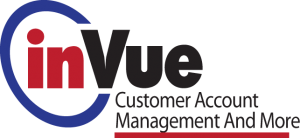How good advice 'Online' can attract customers
Posted: 05/01/16
By Richard Rutigliano, PriMedia, Inc.
Home comfort companies have a great opportunity to gain market share and strengthen ties to customers by developing an effective "voice" and making some noise online.
The Internet has spawned a new style of shopping, and smart companies across all economic sectors are reworking their marketing strategies to match changing consumer habits. Instead of relying on the one-way outreach that has served them effectively until recently—such as advertisements and direct mail—top retailers are focusing on how they appear online when a customer comes looking for products or services like theirs.
"Inbound marketing" is the term for activities aimed at customers who use a search engine to find what they want, and the key to successful inbound marketing is informative online content. Rather than rely on a persuasive website alone, inbound marketing builds a collection of useful content that catches customers' attention and reflects favorably on the company. The underlying premise is that consumers are shaking off traditional "outbound" messaging and using search engines to find what they want themselves.
How Customers Find Local Companies
It's a completely different way of connecting with customers. Inbound marketing requires companies to take on new tasks—like producing blogs and interacting with customers through social media— but it's easy to track results, and the tactics mesh perfectly with the latest consumer data. A 2011 survey by BrightLocal.com showed that 59 percent of consumers use Google each month to find a good local business. Another recent survey, by BIA/Kinsey, indicates that 9 out of 10 consumers use search engines to research local services and products.
Inbound marketing is particularly appealing in a niche like home comfort, for a few reasons. First, consumers have a hard time differentiating one company from another when they all appear similar. Second, many of the companies are late adopters for online marketing, so an ambitious company can really set itself apart from the pack. Third, home comfort companies have a lot of interesting topics to discuss, such as different approaches to comfort, energy conservation, new fuels, price protection, customer service and case studies.
Full-service companies that offer a premium customer experience can benefit the most from providing information, because their strongest prospects gravitate to best-in-class class companies, and strong online information is an excellent indicator of quality.
The thought of using precious company resources to give away information with no direct return might seem strange, but it becomes clearer when you put yourself in the shoes of a consumer looking for home comfort services. The consumer begins their search with little or no information and trusts their search engine that they use—Google in most cases—to lead them to the answer they seek.
The search engine answers the consumer's search queries with results that include company websites, business directories and other content relating to their search terms. If they searched for high-efficiency furnaces in your service area, would they find anything in the first page of search results to strongly attract them to you instead of any of the other companies in your area?
If your website featured a search-optimized blog with separate posts about saving money on home heating and furnaces with variable-speed blower motors, your chances of gaining their attention would soar. The blog would improve your site's search ranking and the posts themselves might appear as separate results. Instead of being just one among several similar listings in the results—and maybe missing the first page altogether—your company stands out.
Missed Opportunities
Getting seen in search results is a must. Each and every time a consumer searches for services like yours and does not click through to your website, you miss a potential strong lead. It's hard enough to get ahead today without missing out on your best opportunities. Getting seen in Google is half the battle. The other half is making the best impression by appearing more knowledgeable, proactive and friendlier than your competition. For this, you need to find the right company voice and use it effectively.
When you provide information that helps consumers make better decisions, you are delivering value without asking anything in return. It's behavior that consumers have come to expect from leadership companies in other niches, and it puts you on a higher plateau than rivals who are simply soliciting business.
You may never have done anything like this online before, but you have probably given lots of free advice offline—and strengthened relationships by doing so. Consumers appreciate a company that takes the time to help them in person, and you tap that same reservoir of goodwill when you publish a blog or an informative video that they appreciate.
Publishing free information online might sound like a daunting job, but it's easily broken down into small steps:
Identify your topics. Assess your products and services and decide which ones are good candidates for information-based marketing. For example, if you install high-end heating and cooling equipment, it makes sense to write about the benefits of high efficiency. If you use home energy audits as a key business driver, plan to focus on the benefits of a whole-home approach to saving energy. Case studies and customer profiles can also provide relevant, helpful information and reflect well on you.
Chose your tools. Information resources can take the form of blogs, videos, articles, social media posts and more. Decide which ones make the most sense for you.
Plan the workflow. Some companies have the resources and skill sets to generate their own content, but most will partner with an online marketing specialist. When partnering, do you want to develop the topics and let the agency generate the content? Or will the agency come up with the ideas and present them for your review? How hands-on do you want to be? For social media sites like Facebook, you'll want to plan a steady flow of planned content, on the one hand, while handling daily interaction with followers on the other.
Identify your spokespeople. It's good to involve managers and employees in communications and not just rely on an impersonal corporate voice. Figure out who will be speaking and how. Keep in mind that an agency can ghostwrite copy that you will attribute to particular staff members.
Focus on Interactivity. To unlock the immense power of social media, you need to generate interaction with your followers. Ask questions and urge people to share your resources and discuss their thoughts. The algorithms that search engines and social media sites use to assign visibility value interaction very highly.
Try different things. Different resources appeal to different people, and you want to cast a wide net. Try to appeal to men and women alike with your mix of topics and resource types.
Set rules. Social media is a spontaneous medium, but you want to be extremely disciplined about what you say and how you say it. Set standards for how quickly you will respond to customers, who will post the responses, and whom you will attribute the responses to. Never allow anyone to lambaste a customer online for a negative comment or review.
You'll invest a lot to attract consumers online, and you need to be mindful of the tone of your informational articles. Any piece that is designed to inform consumers should do exclusively that, with virtually no attempt at sales. Focus on providing information as though you were talking to a good friend. As long as the reader knows where to click to contact your company or get more information, you're covered on promotion. Allowing the lines to blur and veering into excessive promotion will undermine everything you are attempting to do.
You can extend your reach and enhance your image by sharing information online about charitable causes and events you support. Seek affiliations that reflect well on your company and judiciously share information about them. As long as you don't stray too far from the core task of providing relevant information, you can improve your company's appeal.
Speak the Language of Search
Always keep in mind that you are speaking not just to customers and prospects, but also to the search engines. For Google and Bing to feature your information prominently you need to optimize it by using words and phrases in the text that match what consumers are seeking, as well as adding behind-thescenes coding to every blog post, article or video.
Inbound marketing gains momentum over time as your resource collection grows and social media users interact with your materials and share them with friends. Commit to a long-term, consistent strategy and remember that Internet-based assets gain value over time. For example, a customer who first encounters you a year from now—after you have made 50 blog postings and attracted hundreds of Facebook friends—will be more impressed than someone who sees you with just two posts and 20 friends.
If you aspire to grow your market share and be a dominant player in your market, there is no time to waste in building out your inbound marketing resources. The sooner you begin, the more distance you'll be able to create between yourself and your sloweradopting competitors.
Richard Rutigliano is President of PriMedia, Inc., a full service marketing and communications firm with offices in New York City, Long Island and Boston. The company is now offering free marketing consultations to Oilheat retailers. Phone: 800-796-3342, or visit their Web sites at www.primediany.com and www.oilheat-advertising.com.












